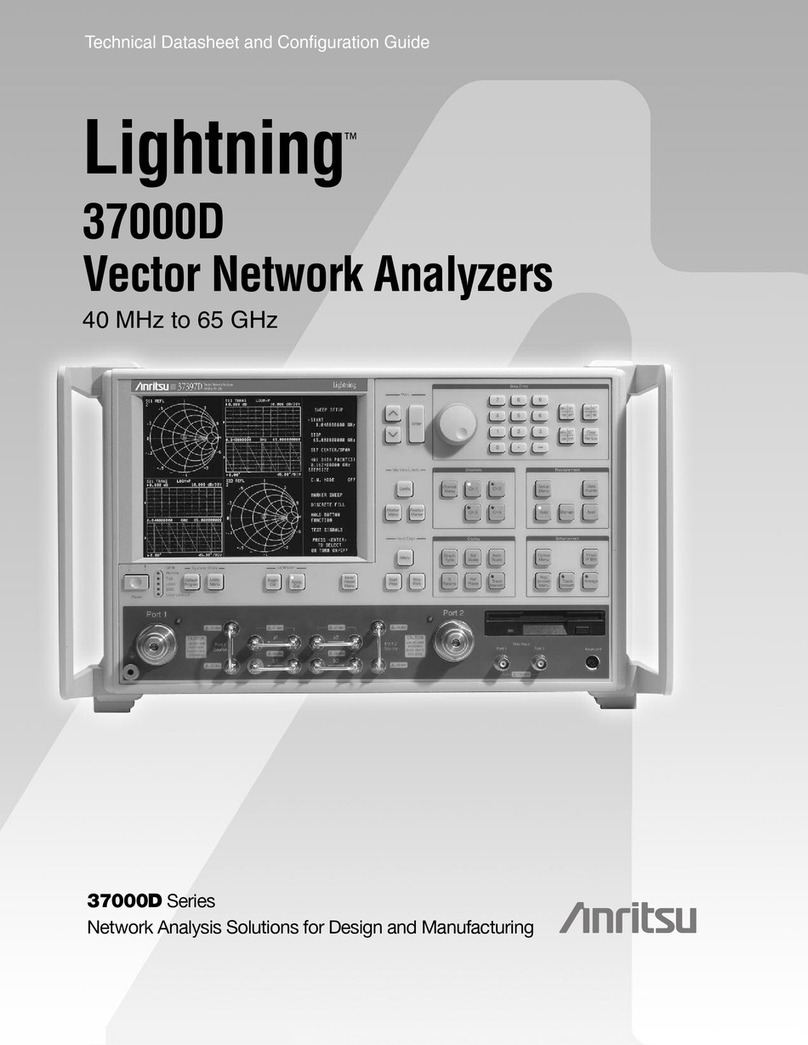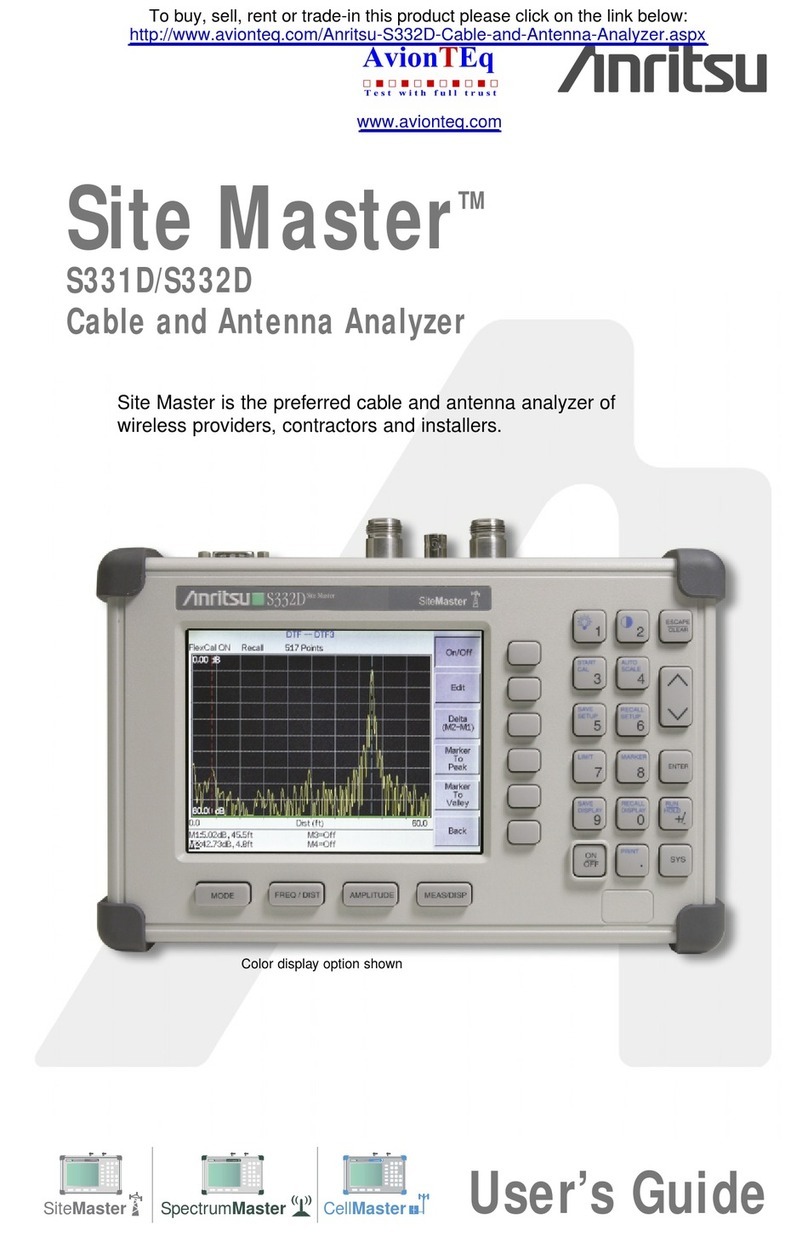
WARRANTY
The Anritsu product(s) listed on the title page is (are) warranted against defects in
materials and workmanship for one year from the date of shipment.
Anritsu's obligation covers repairing or replacing products which prove to be defec-
tive during the warranty period. Buyers shall prepay transportation charges for
equipment returned to Anritsu for warranty repairs. Obligation is limited to the origi-
nal purchaser. Anritsu is not liable for consequential damages.
LIMITATION OF WARRANTY
The foregoing warranty does not apply to Anritsu connectors that have failed due to
normal wear. Also, the warranty does not apply to defects resulting from improper or
inadequate maintenance by the Buyer, unauthorized modification or misuse, or op-
eration outside the environmental specifications of the product. No other warranty is
expressed or implied, and the remedies provided herein are the Buyer's sole and
exclusive remedies.
TRADEMARK ACKNOWLEDGMENTS
Windows, Windows 95, Windows NT, Windows 98, Windows 2000, Windows ME
and Windows XP are registered trademarks of the Microsoft Corporation.
Anritsu, FlexCal, InstaCal and Cell Master are trademarks of Anritsu Company.
NOTICE
Anritsu Company has prepared this manual for use by Anritsu Company personnel
and customers as a guide for the proper installation, operation and maintenance of
Anritsu Company equipment and computer programs. The drawings, specifications,
and information contained herein are the property of Anritsu Company, and any un-
authorized use or disclosure of these drawings, specifications, and information is
prohibited; they shall not be reproduced, copied, or used in whole or in part as the
basis for manufacture or sale of the equipment or software programs without the
prior written consent of Anritsu Company.
UPDATES
Updates to this manual, if any, may be downloaded from the Anritsu internet site at:
http://www.us.anritsu.com.
March 2007 10580-00089
Copyright ã2004-2007 Anritsu Co. Revision: J
Equipment marked with the Crossed-out Wheelie
Bin symbol complies with the European
Parliament and Council Directive 2002/96/EC (the
“WEEE Directive”) in European Union.the
For Products placed on the EU market after
August 13, 2005, please contact your local Anritsu
representative at the end of the product's useful
life to arrange disposal in accordance with your
initial contract and the local law.





























